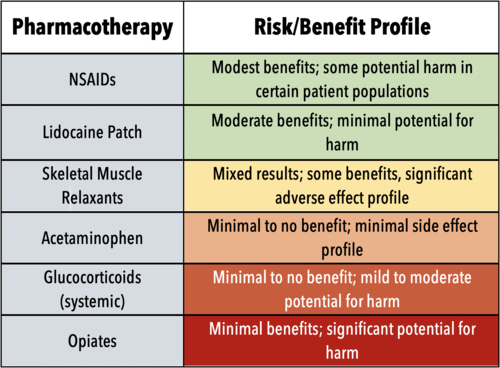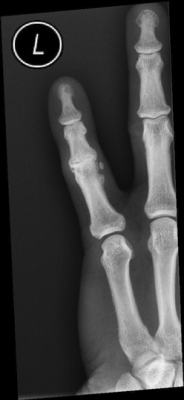Revision Resources
Recent Posts View All
September FOAMed
Methemoglobinemia

A 45 year old brought in by EMS after being found unconscious and cyanotic. She has Celiac disease, and was started on dapsone for dermatitis herpetiformis yesterday. She doesn’t have any other health problems, and aside from the rash, has been healthy recently. She is afebrile and her blood glucose is normal. She looks blue, and her oxygen saturation is reading 85% despite the nonrebreather placed by EMS. Her working of breathing appears normal and her lung exam is unremarkable. The nurse doing blood work notes that her blood looks funny – a chocolate brown colour. Could this be methemoglobinemia?
Treatment of Acute Low Back Pain in the ED

The breadth and depth of the treatment of back pain is expansive, and often focused on specific diagnoses. An especially challenging subtype of acute low back pain (ALBP) to treat is nonspecific low back pain, as it by definition has no easily identifiable pathologic or anatomic cause. Thus, there are no specific treatments that can target an etiology for nonspecific low back pain, which remains a diagnosis of exclusion. This review focuses on emergency department-relevant treatment of this subtype of acute back pain rather than the treatment of specific etiologies of back pain. A careful history and physical examination is essential in the evaluation of low back pain to assess for potential life-threatening causes first, such as spinal epidural abscess, malignancy, cauda equina syndrome or abdominal aortic aneurysm.
Approach to the Red Eye

Your first patient is a 67-year-old female who recently had glaucoma surgery 1 week ago presenting with 3 days of dull eye pain, blurry vision, and fevers up to 101.3F without other symptoms. Her visual acuity is 20/200 in the affected eye and is also injected. Your slit lamp exam is significant for a layering of white blood cells in the anterior chamber that fills approximately ¼ of the chamber.
GBL overdose and what to do about it

GBL (Gamma Butylrolactone) otherwise known as G, Gina or liquid ecstasy is a clear colourless liquid with a distinctly chemically metallic taste as oppose to it’s little brother GHB (Gamma hydroxybutyrate) which is described as tasting salty. GHB is a precursor to GHB in the body. They first appeared to be used recreationally in the 1980s as a body-building supplement to aid Growth hormone production (by inducing sleep). It’s use as an anabolic didn’t amount to much but its sleep inducing properties were capitalised on and its reputation as a date rape drug ensued. Over the coming years it became a popular drug in gay clubs and sex scenes all over the world as in low dose it produces a euphoria and disinhibition towards sex. Unfortunately in slightly higher doses it results in the user receiving a general anaesthetic.
A Jammed Finger

A 50-year-old male presents to the emergency department with a new inability to extend his 5th digit of the left hand. He states he was playing a game of pick-up basketball last week when he jammed the finger while attempting to catch a pass from a teammate. An AP and lateral radiograph of the digit is obtained. What is your diagnosis? What causes this injury? What exam maneuver can help diagnose the underlying injury before the deformity is evident? What is the treatment/management of this injury? What are the surgical indications?
Are you sure you wish to end this session?

